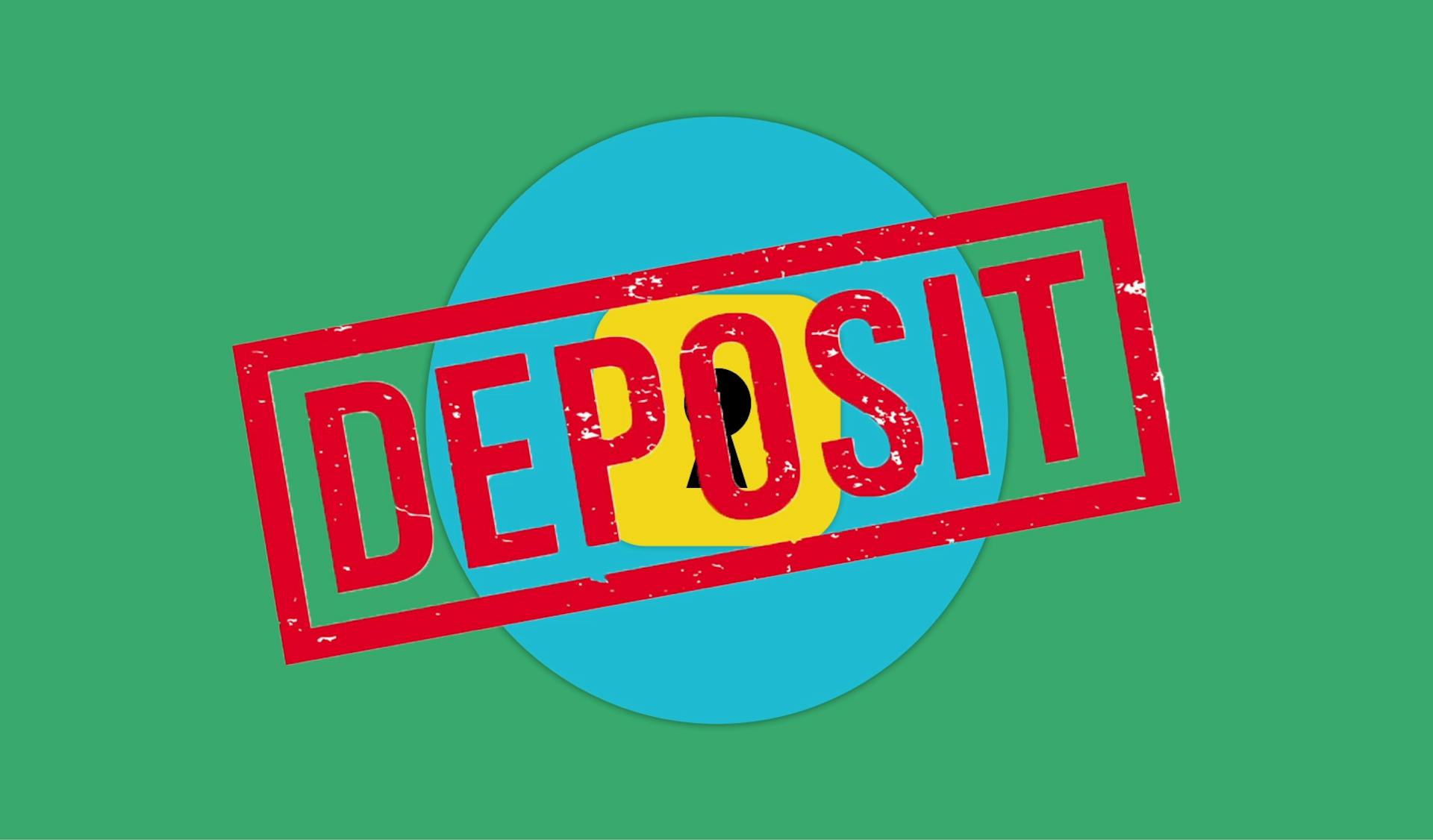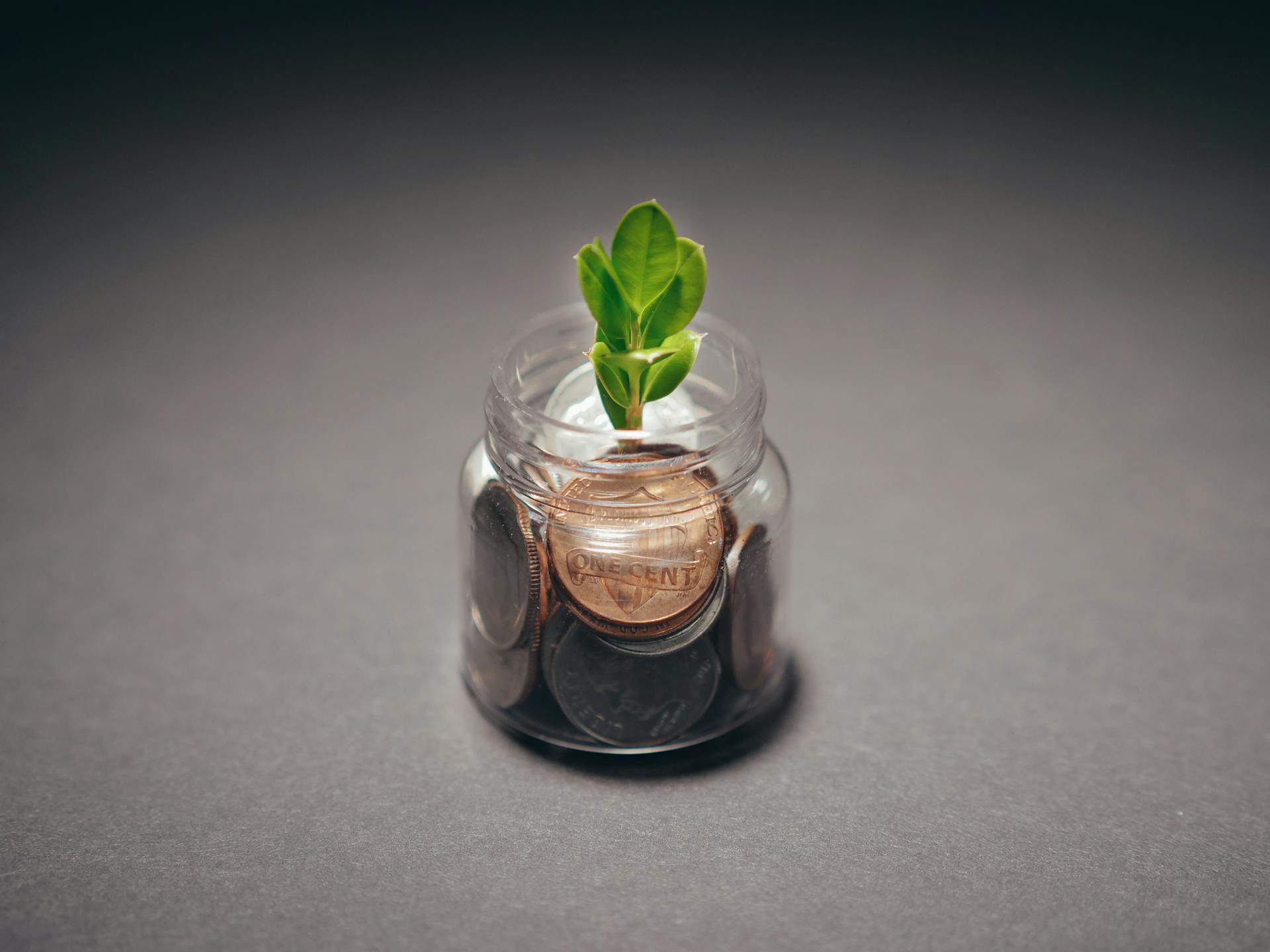
Green finance loans are a type of loan that's designed to help businesses and individuals fund projects that have a positive impact on the environment.
These loans can be used for a variety of purposes, such as investing in renewable energy sources, reducing energy consumption, or implementing sustainable practices in agriculture.
Green finance loans have become increasingly popular in recent years, with many governments and organizations offering incentives and support for businesses that adopt environmentally friendly practices.
The average interest rate for green finance loans is around 5-6%, which is lower than traditional loans.
Broaden your view: Green Energy Finance
Loan Basics
Green loans can be any type of loan instrument, such as a term loan or revolving credit facility, that adheres to the GLPs.
Green loans are offered by a variety of financial institutions, including banks and credit unions, that provide financing for environmentally focused projects.
Both individuals and businesses can become green loan borrowers, with qualification requirements depending on the lender or loan program and the details of the project.
The U.S. government offers loan programs that businesses can leverage to fund green projects, such as the Green Lender Initiative established to add more climate lenders to the Small Business Administration (SBA) loan programs.
Green loans offer borrowers a way to demonstrate their commitment to green initiatives, such as sustainable practices or reducing carbon emissions.
Explore further: Private Wealth Management Course
Use of Proceeds
When a borrower takes out a green finance loan, it's essential to use the funds wisely to maximize the environmental benefits. Borrowers should demonstrate that the project to be funded has clear environmental benefits, such as conservation or climate change mitigation.
The funds should be used to drive energy efficiency, which can be achieved through various means like upgrading to energy-efficient appliances or implementing smart grid technologies. This can lead to significant reductions in energy consumption and lower greenhouse gas emissions.
Borrowers are expected to track the use of the loan proceeds and maintain transparency in that process. This is crucial to ensure that the funds are being used as intended and to provide accountability.
Suggestion: Hsbc Premier Benefits
Green finance loans can be used to fund projects that reduce carbon emissions, waste, and pollution. By doing so, borrowers can help preserve biodiversity and improve air and water quality.
Here are some examples of how green finance loans can be used to achieve environmental benefits:
Examples
Green loans can help fund a wide range of projects, from energy-efficient home improvements to renewable energy installations.
Examples of green projects include installing solar panels, solar water heaters, and geothermal heat pumps.
You can qualify for federal and state tax credits for certain green projects, such as solar panels and energy-efficient appliances.
Cutting energy costs is a significant benefit of green projects, with some installations saving homeowners up to $50,000 over the lifetime of the system.
Installing energy-efficient appliances and fixtures can slash water bills by as much as $380 a year.
Replacing old toilets with WaterSense-labeled models can save homeowners up to $130 each year on their water bills.
Energy-efficient-rated homes sell for 2.7% more on average compared to traditional homes, making green improvements a smart investment for homeowners who plan to sell.
By making your home more energy efficient, you're doing your part to help the environment and reducing your carbon footprint.
Expand your knowledge: What Is Regulation Z in Banking
Types of Loans
Green loans can be any type of loan instrument, such as a term loan or revolving credit facility, that adheres to the GLPs.
Financial institutions like banks and credit unions offer green loans to individuals and businesses. Borrowers can also work with green banks that focus on financing driven by the mission to fight climate change.
The U.S. government offers loan programs that businesses can leverage to fund green projects, such as the Green Lender Initiative.
Green loans are available to both individuals and businesses, with qualification requirements depending on the lender or loan program and the project details.
Green loans support projects that have a positive environmental impact, allowing borrowers to demonstrate their commitment to green initiatives like sustainable practices or reducing carbon emissions.
Personal and Business Loans
Personal and Business Loans can be used for a wide range of environmentally beneficial projects.
You can use personal green loans to fund eco-friendly home remodeling, residential solar panel installation, or the purchase of an electric vehicle.
Intriguing read: Difference between Business and Personal Bank Account
Businesses may seek green loans for purposes such as developing green, LEED-certified buildings or purchasing green tech like electric vehicles or alternative energy.
Green loans can help borrowers secure funding for environmentally beneficial projects, demonstrate a commitment to ESG principles, and meet regulatory targets related to environmental concerns.
Here are some examples of projects that can be funded with green loans:
- Eco-friendly home remodeling
- Residential solar panel installation
- Purchase of an electric vehicle
- Developing green, LEED-certified buildings
- Purchasing green tech, such as electric vehicles or alternative energy
- Restoration of natural habitats
Business
Businesses can use green loans for various purposes, such as developing green, LEED-certified buildings. This can be a great way to reduce a company's environmental impact and improve its reputation.
Developing green buildings can involve purchasing green tech, such as electric vehicles or alternative energy sources. In fact, businesses may seek green loans to purchase green tech, which can help reduce their carbon footprint.
Businesses may also use green loans to restore natural habitats. This can be a great way to give back to the environment and improve local ecosystems.
A different take: Can I Use My Virtual Card at Atm

Green loans can help businesses meet regulatory targets related to environmental concerns. By using green loans, businesses can demonstrate their commitment to ESG principles and improve their bottom line.
Businesses can use green loans for various projects, such as:
- Developing green, LEED-certified buildings
- Purchasing green tech, such as electric vehicles or alternative energy
- Restoration of natural habitats
For Borrowers
As a borrower, you're probably wondering how green loans can benefit you. Green loans can help borrowers secure funding for environmentally beneficial projects.
Green loans are designed to finance or refinance projects that have a positive environmental impact. This can include anything from developing green, LEED-certified buildings to purchasing green tech like electric vehicles or alternative energy.
To qualify for a green loan, borrowers must adhere to the Green Loan Principles (GLPs). This includes using the proceeds to fund a green project and meeting specific reporting requirements. Borrowers must also meet the qualification requirements set by the lender or loan program.
Green loans can help borrowers demonstrate a commitment to Environmental, Social, and Governance (ESG) principles. This can be especially beneficial for businesses looking to meet regulatory targets related to environmental concerns.
Here are some benefits of green loans for borrowers:
- Secure funding for environmentally beneficial projects
- Demonstrate a commitment to ESG principles
- Meet regulatory targets related to environmental concerns
Environmental Finance
Environmental finance is a key aspect of green finance loans, enabling projects that drive energy efficiency, reduce carbon emissions, reduce waste, improve air and water quality, and preserve biodiversity. These projects have the potential to make a significant impact on the environment.
Green loans can fund initiatives that prevent global warming, energy conservation, and other investments with environmental protection objectives. For example, Mizuho Bank provides loans that qualify for various interest subsidy programs, including the Japanese Ministry of the Environment's Interest Subsidies for Promoting Reduction of Environmental Risk.
Borrowers can use loan funds for projects with clear environmental benefits, such as conservation or climate change mitigation. This includes investments in facilities that prevent global warming, energy conservation, and research on the environmental impact of projects.
Here are some examples of environmental benefits that green loans can fund:
- Drive energy efficiency
- Reduce carbon emissions
- Reduce waste
- Improve air and water quality
- Preserve biodiversity
Use of Proceeds
A green loan's use of proceeds is a crucial aspect of environmental finance. Borrowers must demonstrate that the project being funded has clear environmental benefits.
Discover more: Bitcoin Environmental Impact
The first principle is that the project should have clear environmental benefits, such as conservation or climate change mitigation. This ensures that the loan is being used for a purpose that aligns with the goals of environmental finance.
A green loan can fund projects that drive energy efficiency, reduce carbon emissions, reduce waste, improve air and water quality, and preserve biodiversity. These are all key areas of focus for environmental finance.
Borrowers should clearly outline how the loan proceeds will be used to achieve these environmental benefits. This helps to ensure transparency and accountability in the use of the loan.
Here are some examples of how loan proceeds can be used:
- Drive energy efficiency
- Reduce carbon emissions
- Reduce waste
- Improve air and water quality
- Preserve biodiversity
Environmental Finance
Environmental finance is a crucial aspect of promoting sustainability and reducing our carbon footprint. Green loans have the potential to fund projects that drive energy efficiency, reduce carbon emissions, reduce waste, improve air and water quality, and preserve biodiversity.
Mizuho Securities is contributing to the expansion of the sustainable finance market by strengthening the support system for the issuing of sustainable bonds. They have been the number one domestic sustainable bonds underwriting volume for five consecutive years since FY2019.
Additional reading: List of Government Bonds
Green bonds are a type of bond that is specifically used to fund environmental projects. IFC was one of the earliest issuers of green bonds, launching a Green Bond Program in 2010 to help catalyze the market and unlock investment for private sector projects that support renewable energy and energy efficiency.
Mizuho Bank provides loans that qualify for various interest subsidy programs, including the Japanese Ministry of the Environment's Interest Subsidies for Promoting Reduction of Environmental Risk and Interest Subsidies for Financing Environmental Risk Research. These programs provide interest subsidies from the national government and other sources for environmentally conscious capital investment loans meeting certain requirements.
To support individuals' environmental protection efforts, Mizuho Bank offers loans with lower interest rates for customers who want to remodel their existing home, or build or purchase a new home that is more environmentally friendly. This can include employing solar power generation or all-electric systems.
Here are some examples of Mizuho Bank's financing for renewable energy projects:
Mizuho Bank's financing for renewable energy projects is a great example of how environmental finance can be used to promote sustainability and reduce our carbon footprint. By providing financing for renewable energy projects, Mizuho Bank is helping to support the transition to a low-carbon economy.
Frequently Asked Questions
What are the disadvantages of green loans?
Green loans can be misleading due to a lack of standard definitions, leading to 'greenwashing' where projects are misrepresented as eco-friendly. This can result in minimal or negative environmental impact
Sources
- https://www.investopedia.com/what-is-a-green-loan-8696296
- https://www.ifc.org/en/what-we-do/sector-expertise/financial-institutions/climate-finance/green-finance
- http://www.mizuhogroup.com/sustainability/environment/business/financing
- https://blogs.worldbank.org/en/climatechange/green-loans-financing-transition-low-carbon-economy
- https://www.discover.com/personal-loans/resources/learn-about-personal-loans/how-a-green-loan-can-help-you-save-money/
Featured Images: pexels.com


